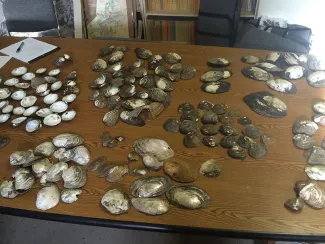Wildlife Diversity biologists are surveying the Neosho, Spring and Elk Rivers in the northeastern corner of the state. So far, they've documented 61 species of fish and freshwater mussels; 11 of the documented species are considered to be of greatest conservation need. These survey results are the most current assessment of species of greatest conservation need in this three river system to date.
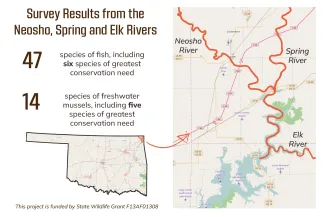
The Grand River originates as the Neosho River in the tallgrass prairies of eastern Kansas and flows southward to its confluence with the Arkansas River east of Muskogee, Oklahoma. Within 25 miles of entering Oklahoma, the Neosho River joins with the Spring River and becomes the Grand River. This river's watershed drains the eastern part of Oklahoma's tallgrass prairie region and the northern half of Oklahoma's Ozark region in addition to portions of southwestern Missouri and southeastern Kansas. Historically, the Grand River was deep and swift-moving, but it has been modified by the construction of three reservoirs, Grand Lake, Hudson Reservoir and Fort Gibson Reservoir. At least 47 species of fish and 14 species of freshwater mussels have been documented in the Neosho, Spring and Elk Rivers so far.

Six of the 47 species of fish documented are considered to be of greatest conservation need. Besides the below pictured cardinal shiner and sunburst darter, biologists also found species of greatest conservation need like the bluntface shiner, Ozark minnow, river darter and wedgespot shiner.
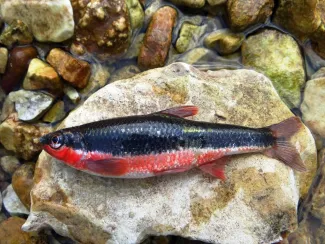
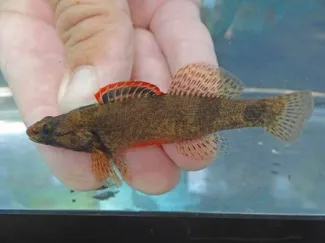
In addition to species of greatest conservation need, biologists documented other species like the gravel chub and the stonecat.
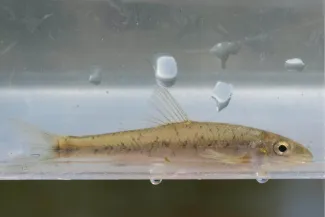
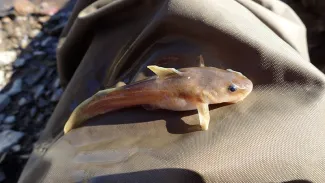
The shells, or remains, of several freshwater mussels were also collected during the surveys. Biologists collected the shells and later sorted and identified the remains of 14 species of freshwater mussels. Five of those mussels, the bleufer, monkeyface, threeridge, washboard and plain pocketbook, are considered to be of greatest conservation need.
